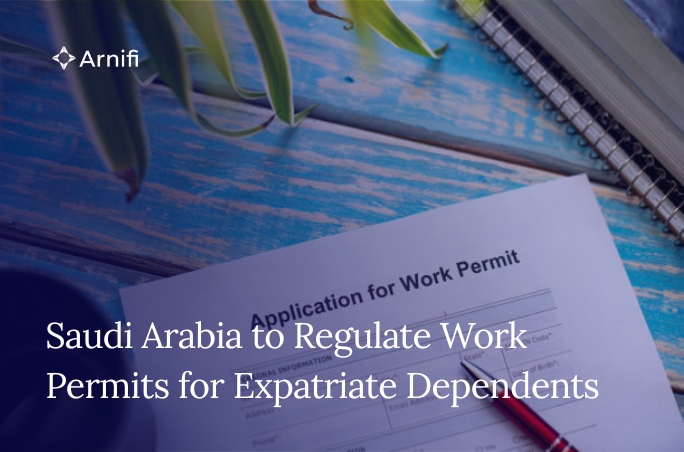Dubai Rain Crisis: Unprecedented Flooding and Damage
by
Shethana
Apr 17, 2024  10 MIN READ
10 MIN READ

Key Highlights
- The desert nation of the United Arab Emirates experienced heaviest rain ever recorded, causing widespread flooding and damage. Dubai submerged in floods as UAE gets over a year’s worth of rain in hours.
- Dubai International Airport, the busiest airfield for international travel, was flooded, leading to disruptions in air travel.
- The rainfall surpassed anything documented since 1949, with more than 5.59 inches of rain falling in 24 hours.
- The government responded with emergency measures, and the community came together to support those affected.
- The causes of the unprecedented rainfall, including natural factors and urban development, are being analyzed.
- FAQs: How often does Dubai experience this level of rainfall?
Introduction
The recent Dubai rain crisis has brought unprecedented flooding and damage to the United Arab Emirates. The desert nation, known for its arid climate, was caught off guard by the heaviest rain ever recorded in the region. The deluge resulted in severe flooding and disrupted daily life, particularly in the bustling city of Dubai. The impact was felt most acutely at Dubai International Airport, the world’s busiest airfield for international travel. The rain exceeded any documented levels since data collection began in 1949, making it the highest rainfall in the history of the UAE.
NEWS
- The administration of Dubai has allowed its workers to continue working from home until Wednesday.
- Eighteen people were killed in Oman, the neighbor of the United Arab Emirates, when a strong downpour there also claimed the lives of ten schoolchildren who “were swept away in a vehicle with an adult,” according to the AP.
- Before the United Arab Emirates was founded in 1971, the rain was “a historic weather event” that exceeded “anything documented since the start of data collection in 1949.”
Overview of the Dubai Rain Crisis
Dubai, located on the eastern edge of the Arabian Peninsula, experienced an unprecedented rain crisis in recent days. The heavy rain, the heaviest ever recorded in the region, wreaked havoc across the United Arab Emirates. The storms began on late Monday, with 0.79 inches of rain falling at Dubai International Airport. However, the rainfall intensified on Tuesday, by the end of Tuesday, more than 142 millimeters (5.59 inches) of rain had soaked Dubai within 24 hours. This amount far exceeds the average rainfall of 3.73 inches for an entire year at the airport.
The severity of the rain and its impacts on the region cannot be understated. The flooding caused road blockages, disrupted transportation, and led to the closure of Dubai International Airport due to record rainfall. Passengers struggled to reach the terminals, and flights were diverted or delayed. The airport and the flagship carrier Emirates issued warnings to travelers, urging them not to come to the airport unless absolutely necessary due to strict laws and regulations in the country.
The severity of the rainfall and initial impacts

The severity of the rainfall during the Dubai rain crisis cannot be overstated. The storms brought heavy rain and hail, causing widespread flooding and damage across the United Arab Emirates. The rain surpassed anything documented since the start of data collection in 1949, with more than 5.59 inches falling within a 24-hour period. This amount is significantly higher than the average annual rainfall of 3.73 inches at Dubai International Airport in an average year, with the highest recorded rainfall in the Khatm Al Shakla area in Al Ain reaching 254mm in less than 24 hours.
The initial impacts of the heavy rain were felt most acutely at Dubai International Airport. The floodwater covered taxiways, leading to the suspension of arrivals and disruptions to departures. Passengers struggled to reach the terminals due to the flooded roads surrounding the airport. The airport and the flagship carrier Emirates issued warnings and advisories, urging travelers to avoid coming to the airport unless absolutely necessary on Wednesday morning. Some passengers even had to seek shelter in the nearby metro station due to the chaos and flooding at the airport.
The world’s biggest airport for international travel, Dubai International Airport, had to reroute a number of incoming flights on Tuesday due to risky flying conditions caused by the severe downpour. Arrivals at the airport, which usually receive over 100 flights each evening, were suspended for a rare period of time and then gradually resumed twenty-five minutes later. Even when departure flights resumed in the evening, there were still delays and cancellations in flight operations.
Historical context: Comparing past and present rainfall patterns
To understand the significance of the Dubai rain crisis, it is important to analyze the historical rainfall patterns and compare them to the recent events. Meteorological data collected at Dubai International Airport shows that the average annual rainfall is 3.73 inches. However, the recent rainfall, which exceeded 5.59 inches within 24 hours, far surpasses the expected amount.
Climate change and global warming are factors that contribute to the unpredictability of weather patterns and the increasing frequency of extreme events. It is crucial to analyze the historical context of rainfall patterns, especially in light of the recent severe storms, to understand the impact of climate change on the region. The unprecedented nature of the recent rain crisis highlights the need for further research and analysis to better understand the long-term implications of climate change on the Arabian Peninsula.
The Immediate Effects of Flooding

The immediate effects of the flooding caused by the Dubai rain crisis were significant. The infrastructure and public facilities in the region were severely impacted, leading to road blockages and disruptions in transportation. The heavy rains that caused the suspensions and diversions are part of broader adverse weather conditions affecting the Gulf Peninsula. In Oman, heavy rainfall has led to tragic consequences with at least 18 fatalities reported in recent days. Dubai itself faced unprecedented flooding, impacting transportation, retail locations like Dubai Mall and Mall of the Emirates, and even the metro system where water pooled ankle-deep in some stations.
Damage to infrastructure and public facilities
The Dubai rain crisis caused extensive damage to infrastructure and public facilities across the United Arab Emirates. The heavy rain and subsequent flooding led to road blockages and disruptions in transportation, with some vehicles, including tanker trucks, becoming stranded due to the high water levels. Roads were submerged, making it difficult for vehicles to navigate through the city. The floodwater also affected public facilities, such as schools and government offices, in various parts of the Middle East, leading to closures and remote work arrangements for government employees.
Impact on Dubai International Airport and transportation disruptions
The Dubai rain crisis had a significant impact on Dubai International Airport, the world’s busiest airfield for international travel. The floodwater covered taxiways, making it difficult for aircraft to land and causing disruptions to departures and arrivals. The airport had to suspend operations for a brief period and divert incoming flights to other airports. Passengers faced challenges in reaching the terminals due to the flooded roads surrounding the airport, including the Metro’s Red and Green lines which provide transportation to and from the airport.
The transportation disruptions extended beyond the airport, affecting major highways and road networks in the region. The heavy rain and flooding led to road blockages and closures, making it difficult for vehicles to navigate through the city. The disruptions in transportation had an impact on daily life, with people struggling to commute and reach their destinations.
Response to the Crisis
The Dubai rain crisis prompted a swift response from both the government and the community. Emergency measures were put in place to manage the crisis and mitigate its impacts. Government employees worked under challenging conditions to address the immediate effects of the flooding and provide assistance to those affected. The community also came together, offering support and volunteering their efforts to help those in need. The response to the crisis reflects the resilience and unity of the United Arab Emirates in the face of adversity.
Emergency measures and government response
The government of the United Arab Emirates implemented emergency measures to address the Dubai rain crisis and manage the severe weather conditions. Government employees worked under very challenging conditions to ensure the safety and well-being of the residents and visitors. This involved coordinating the clean-up efforts, providing assistance to those affected by the flooding, and ensuring the smooth operation of essential services. The government’s response to the crisis reflects its commitment to protecting its citizens and maintaining the stability of the region. Despite the unprecedented nature of the rain crisis, the government’s swift and organized response has helped alleviate the immediate effects of the flooding and provide support to those in need.
Natural factors contributing to the unprecedented rainfall
Several natural factors are being considered as potential contributors to the unprecedented rainfall during the Dubai rain crisis. Global warming and climate change are known to increase the intensity and frequency of extreme weather events, including heavy rainfall. The eastern edge of the Arabian Peninsula, where Dubai is located, is susceptible to weather systems that can bring heavy rain. Understanding the natural factors that contributed to the unprecedented rainfall will help inform strategies for managing and mitigating the impact of such events in the future.
Possible role of urban development in exacerbating flood effects
The role of urban development in exacerbating the flood effects during the Dubai rain crisis is being analyzed. The lack of regular rainfall in the region, particularly during the cooler winter months, has resulted in many roads and areas lacking proper drainage systems. Additionally, the modification of natural waterways and the removal of natural vegetation can disrupt the natural flow of water and contribute to the severity of flooding. Understanding the possible role of urban development in exacerbating flood effects will help inform urban planning and development practices to minimize the impact of extreme weather events.
Conclusion
The recent Dubai rain crisis has highlighted the vulnerability of the city to extreme weather events. The unprecedented flooding has caused substantial damage to infrastructure and public facilities, disrupting transportation and daily life. The swift emergency measures and community support have been crucial in managing the crisis. As we analyze the causes, natural factors and urban development’s role come into focus. The economic implications on local businesses and forecasting long-term recovery pose significant challenges. Environmental and health concerns, such as waterborne diseases and impacts on the ecosystem, need careful assessment post-flooding. This crisis underscores the importance of preparedness and sustainable urban planning in the face of climate change.
About Arnifi
Arnifi is digital first Corporate service provider helping companies enter the Middle East region, starting with UAE and Saudi Arabia markets. Founded and backed by professionals from Amazon, Souq and other large companies operating in KSA – the team understands what it takes to succeed as a startup in both UAE and Saudi Arabian markets, apart from going through the setup process multiple times. Arnifi will provide a truly digital experience to entry and scale up of companies both UAE and Saudi Arabia. Discover tailored solutions and strategic partnerships that propel your business forward. Check out at – www.Arnifi.com for more details.
Frequently Asked Questions
How often does Dubai experience this level of rainfall?
Dubai does not frequently experience this level of rainfall. The recent rain crisis, with its unprecedented heavy rainfall, is a rare and historic weather event. The average annual rainfall at Dubai International Airport is significantly less than the amount that fell during the rain crisis.
READ MORE : Explore the Best Real Estate Listings in Dubai: Find Your Dream Property Today!
READ MORE : Construction Cost in Dubai: Everything You Need to Know
Top UAE Packages

Related Articles
Top UAE Packages



